![]()
![]()
![]()
Use LEFT and RIGHT arrow keys to navigate between flashcards;
Use UP and DOWN arrow keys to flip the card;
H to show hint;
A reads text to speech;
71 Cards in this Set
- Front
- Back
- 3rd side (hint)
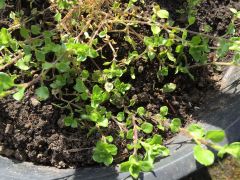
|
Caryophyllaceae - Pink family Common chickweed Stellaria media Annual
|
* It may also spread horizontally bystems which root at the nodes to form thick, succulent mats. * The many branches are bright green with swollen nodes. * Stems are smooth except for a single lengthwise band offine white hair. This band alternates from one side of thebranch to the other on successive internodes and extendsonto the petioles. * Leaves occur opposite on swollen nodes.They are oval with pointed tips, stalked near the base andsessile near tips of branches. * Small, white flowers areproduced at tips of branches and in angles betweenbranches. Each flower has five deeply-lobed petals. * A highly successful colonizingspecies. Thus it is one of the most widely distributed weedsin the world. * Similar to mouse-eared chickweed |
|
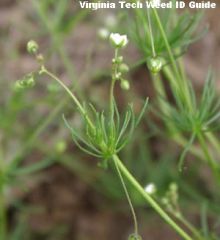
|
Caryophyllaceae - Pink family Corn spurry Spergula arvensis Annual
|
* Needle-likeleaves are rounded on the upper surface and groovedlengthwise on the lower surface. They occur in whorls of sixto thirty (or more) at each node. * Theslender stems are usually branched from the base, brightgreen, sparsely hairy and somewhat sticky. * Numerous small white flowers have five white petals and five green sepals, sit in forked clusters at the ends of stems. * Small, oval seed-pod. * Prefers disturbed, slightly acidic soils. It is astrong competitor in gardens, row crops and field crops, butis never a problem in established pastures. |
|
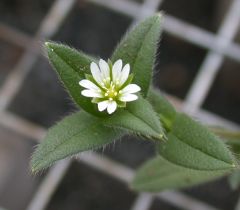
|
Caryophyllaceae - Pink family Mouse-eared chickweed Cerastium vulgatum Perennial |
* Can reproduces by spreads by horizontal stems which root at the nodes. It may form thick patches. * The stems are dark green, densely hairy, and maybe slightly sticky. * The stalkless, hairy leaves are opposite onswollen nodes, and ovate with a pointed tip. * Flowers havefive white, deeply divided petals, and hairy sepals withwhitish margins. They occur in small groups at the tips ofbranches. * Occurs in almost any kind of habitatranging from dry sandy areas to wet depressions. It is acommon and persistent weed of lawns. * Similar to common chickweed, but much more hairy |
|
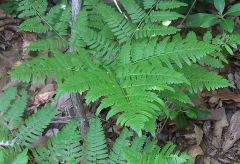
|
Dennstaedtiaceae - Fern family Bracken fern Pteridium spp Perennial |
* Only fern we need to know * Extensive root system (rhizomes) * Attracted to thiomine deficient soil - good indicator |
|

|
Amaranthaceae - Pigweed family Redroot pigweed Amaranthus retroflexus Annual
|
|
|
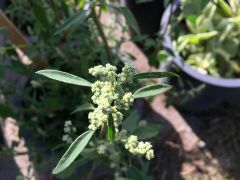
|
Chenopodiaceae - Goosefoot family Lamb's-quarters Chenopodium album Annual
* Edible |
|
|
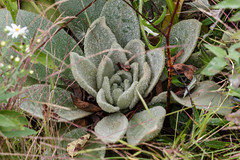
|
Scrophulariaceae - Figwort or Snapdragon family Common mullein Verbascum thapsus Biennial / short-lived perennial
* Rosette leaves can be over a foot long and are densely covered on both sides with soft hairs. |
|
|
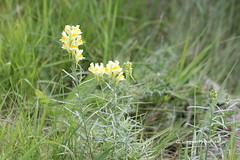
|
Scrophulariaceae - Figwort or Snapdragon family Yellow toadflax Linaria vulgaris Perennial
* Stalkless leaves are narrow and pointed at both ends; bright yellow "snapdragon-like" flowers with an orange spot on the lower lip are 2 to 3.5 cm long
|
|
|

|
Rosaceae - Rose family Himalayan blackberry Rubus armeniacus Perennial * Very aggressive * Edible fruits make it so people do not want to cut it down |
|
|
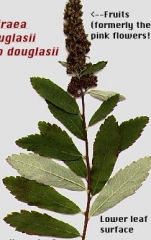
|
Rosaceae - Rose family Hardhack Spiraea tomentosa Perennial * Simple alternate leaves, smooth-ish and dark green |
|
|
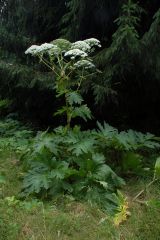
|
Apiaceae - Carrot family Giant hogweed Heracleum mantegazzianum Short-lived perennial
* Photophyllotoxins that can cause skin burns and blindness to eyes |
|
|
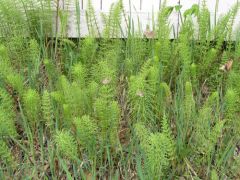
|
Equisetaceae - Horsetail Family Field horsetail Equisetum arvense Perennial * Good indicator of acidic soil * Whorled leaves |
|
|
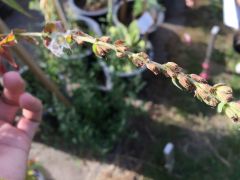
|
Lythraceae - Loosestrife family Purple loosestrife Lythrum salicaria Perennial
* It can be identified while in bloom by its purple-magenta flowers that form on distinctive terminal spikes. |
|
|
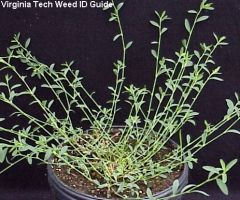
|
Polygonaceae - Knotweed family Prostrate Knotweed Polygonum aviculare Short-lived perennial or annual * Contains numerous slender, wiry stems that are highly branched and form mats. The extensive branching gives it a zigzag appearance. * The inconspicuous flower heads are found at the top of short stalks that grow from the bases of leaves. * They consist of a cluster of two to eight tiny, green flowers with white or pink edges.
|
|
|
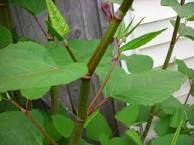
|
Polygonaceae - Knotweed family Japanese knotweed Polygonum cuspidatum Perennial * Stems are round, reddish-purple, smooth and have a bamboo-like appearance. * Leaves are ovate with a flat base, reaching 3-6 inches long and 2-5 inches wide with pointed tips. * Flowers are greenish-white.
|
|
|
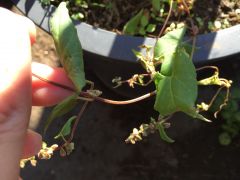
|
Polygonaceae - Knotweed family Wild buckwheat Polygonum convolvulus Annual * Heart shaped leaves * Individual flowers are small greenish-white and not more than ¼ inch across * Similar to morning glory |
|
|
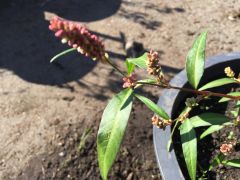
|
Polygonaceae - Knotweed family Green smartweed Polygonum scabrum Annual |
|
|
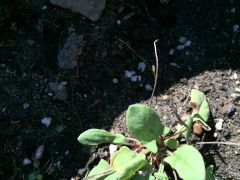
|
Polygonaceae - Knotweed family Sheep sorrel Rumex acetosella Short-lived perennial
* Sheep Sorrel is a relatively unassuming plant, that grows from 4 to 18 inches in height.
|
|
|

|
Polygonaceae - Knotweed family Broadleaf dock Rumex obtusifolius Perennial * Curly broad leafs |
|
|
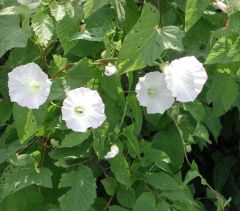
|
Convolvulaceae - Bindweed family Hedge bindweed Convolvulus sepium Perennial * Similar to wild buckwheat * However, the hedge bindweed has large flowers unlike the wild buckwheat (also it is perennial vs. annual) * Medicinal uses - laxatives |
|
|
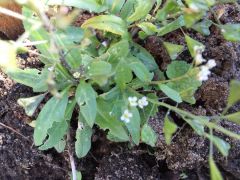
|
Brassicaceae - Mustard family Shepherd's purse Capsella bursa-pastoris Annual * Shepherd’s purse is in the mustard family but it is distinguishable by its valentine or purse-shaped seedpods. * In the rosette stage, it can be distinguished from other mustards with the lobed basal leaves as they are usually hairy, the lobes or divisions more or less uniform on each side, and its generally small size. * Edible
|
|
|
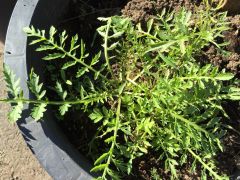
|
Brassicaceae - Mustard family Creeping yellow cress Rorippa sylvestris Perennial * Yellow flowers * Leaves are compound and alternate
|
|
|
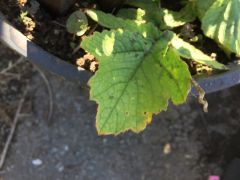
|
Brassicaceae - Mustard family Hedge mustard Sisymbrium officinale Annual * It is distinguished by the large terminal segment of the divided leaf, short tapering pods on very short stalks closely pressed to the stem, and the plant frequently having a gray-green appearance
|
|
|
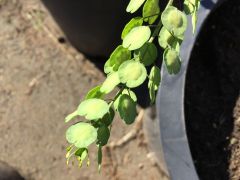
|
Brassicaceae - Mustard family Stinkweed Thlaspi arvense Annual * Lower parts of the weed are arranged in rosette * Nasty odour when crushed * Mature plant has long stalks with alternate leaves and white flowers |
|
|

|
Brassicaceae - Mustard family Wild radish Raphanus raphanistrum Annual
|
|
|
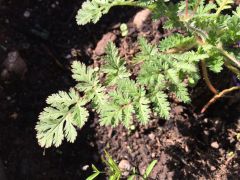
|
Geraniaceae - Geranium family Stork's bill Erodium cicutarium Annual * Hairy stems * Beautiful flowers |
|
|
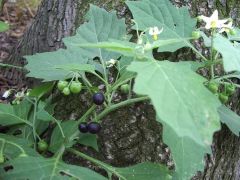
|
Solanaceae - Nightshade family Black nightshade Solanum nigrum Short-lived perennial * Medicinal uses - fever, laxative * Almost hairless and waxy stem |
|
|
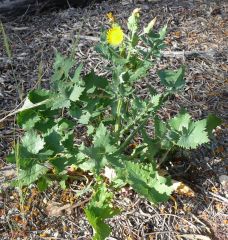
|
Asteraceae Annual sow-thistle Sonchus oleraceus Annual - large terminal lobes |
|
|

|
Asteraceae Bull thistle Circium vulgare Biennial - large flowers - similar to canada thistle - long spines coming off terminal leaves (main difference between canada thistle)
|
|
|
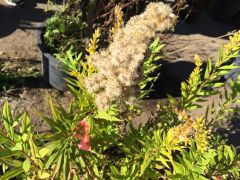
|
Asteraceae Canada goldenrod Solidago canadensis Perennial - narrow, alternate leaves which - causes hayfever - has yellow flowers |
|
|
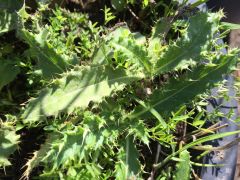
|
Asteraceae Canada thistle Circium arvense Perennial - looks similar to bull thistle |
|
|
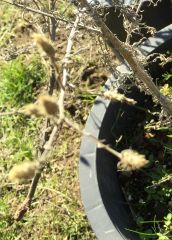
|
Asteraceae Diffuse knapweed Centaurea diffusa Biennial / short-lived perennial - hairy, alternate leaves - upright and branched stem |
|
|
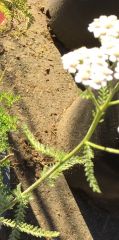
|
Asteraceae Yarrow Achillea millefolium Perennial - finely divided leaves / fern-like - leaves numerous at base but become fewer upwards the stem - umbel influorescense |
|
|

|
Asteraceae Common tansy Tanacetum vulgare Perennial - hairless upright stems - button shaped flowers (yellow) - fern-like leaves - soil indicator: nutrient deficiency |
|
|
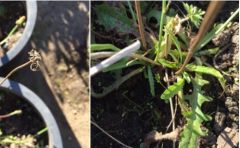
|
Asteraceae Spotted cat's ear Hypochaeris radicata Perennial - reproduces only by seeds - very similar to dandelion, except it has hairy leaves |
|
|
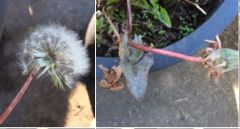
|
Asteraceae Dandelion Taraxacum officinale Perennial - deeply lobed leaves and pointy - hairless - similar to spotted cat's ear |
|
|

|
Asteraceae Canada Fleabane Conyza Canadensis Annual
|
|
|
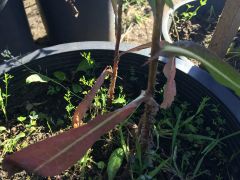
|
Asteraceae Prickly lettuce (Lactuca serriola) Annual or Biennual |
|
|
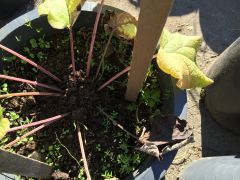
|
Astraceae Common Burdock Arctium minus Biennial - has cockleburs that stick to you |
|
|
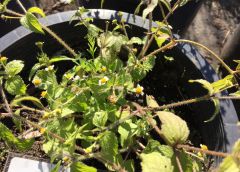
|
Asteraceae Hairy Galinsoga (Galinsoga ciliata) Annual |
|
|
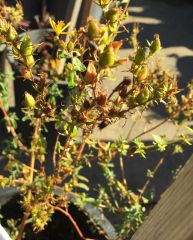
|
Hypericaceae - St. John's Wort family St. John's Wort (Hypericum perforatum)
Perennial |
|
|
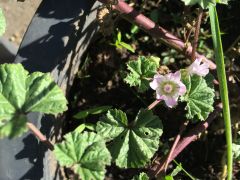
|
Malvaceae - Mallow family Common Mallow Malva neglecta Annual
* Kidney shaped leaves * Has lavender flowers with 5 petals |
|
|
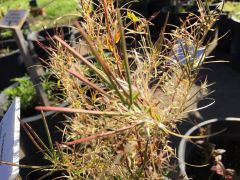
|
Onagraceae - Evening primrose family Fireweed Epilobium angustifolium Perennial * Pretty easy to identify * Has medicinal uses (shoots can be eaten) |
|
|
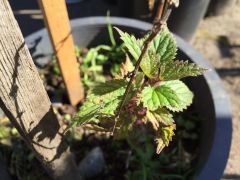
|
Urticaceae - Nettle family Stinging nettle Urtica dioica Perennial
* Stings you (hence the name)
|
|
|
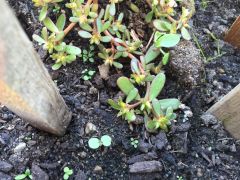
|
Portulacaceae - Purslane family Purslane Portulaca oleraceae Annual
* Crawling |
|
|
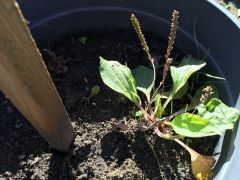
|
Plantaginaceae - Plantain family Broad-leaved plantain Plantago major Perennial
|
|
|
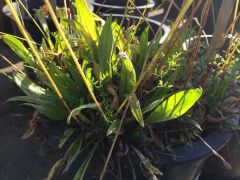
|
Plantaginaceae- Plantain family Narrow-leaved plantain Plantago lanceolata Perennial |
|
|

|
Fabaceae - Legume family Black medick Medicago lupulina Annual |
|
|

|
Fabaceae - Legume family Vetch Vicia spp Annual |
|
|
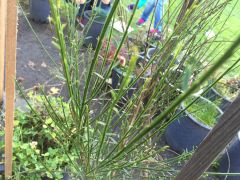
|
Fabaceae - Legume family Scotch broom Cystisus scoparius Perennial |
|
|
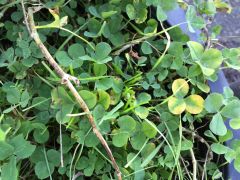
|
Fabaceae - Legume family White clover Trifolium repens Perennial |
|
|

|
Fabaceae - Legume family Red clover Trifolium pretense Perennial |
|
|
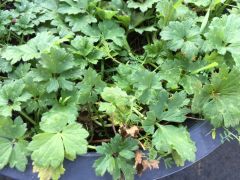
|
Ranunculaceae- Buttercup family Creeping buttercup Ranunculus repens Perennial |
|
|
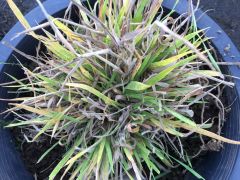
|
Poaceae -Grass Family Downy Brome Bromus tectorum Annual |
|
|
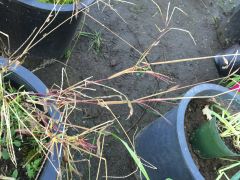
|
Poaceae - Grass Family Large Crabgrass Digitaria sanguinalis Annual |
* Stems are flat in cross-section, often purplish, and usually branched at the base. Leaves are flat, rolled in the bud and have a prominent midvein. * It can be distinguished from smooth crabgrass, D. ischaemum, by its longer, narrower leaf, and presence of long stiff hairs on the sheath and on the upper and lower leaf surfaces |
|
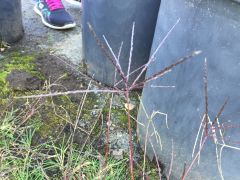
|
Poaceae - Grass Family Smooth Crabgrass Digitaria ischaemum Annual |
* Purple leaves and smooth stem * Similar influorescence to large crabgrass |
|
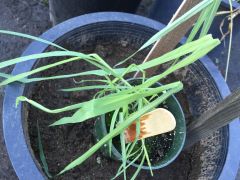
|
Poaceae - Grass Family Witchgrass Panicum capillare Annual |
* Hairy stems (red) * Witch's broom when fully matured |
|
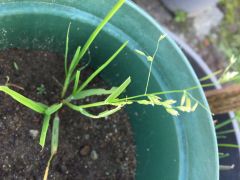
|
Poaceae - Grass Family Annual bluegrass Poa annua Annual |
* One of the most common grass weeds * Has little white flowers |
|

|
Poaceae - Grass Family Reed Canary Grass Phalaris arundinaceae Perennial |
* Persistent seed bank * Tall, 45 degree angle leaves |
|
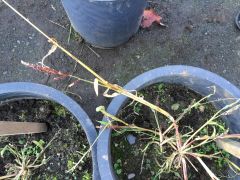
|
Poaceae - Grass Family Barnyard grass Echinochloa crus-galli Annual |
* Hairless and red-ish stems |
|
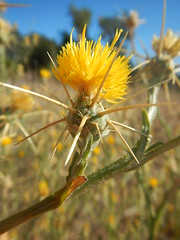
|
EarlyDetection Rapid Response Yellow Star Thistle |
|
|
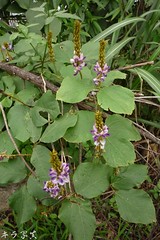
|
Early Detection Rapid Response Kudzu |
|
|

|
Early Detection Rapid Response Flowering rush |
|
|
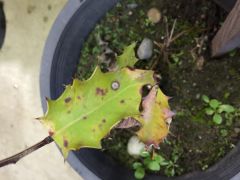
|
Aquifoliaceae - Holly family English Holly Ilex aquifolium Evergreen |
* Poisonous berries |
|
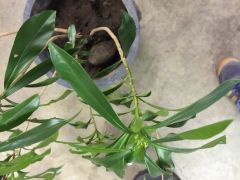
|
Thymelaeaceae - Daphne family Daphne laurel Daphne laureola Evergreen |
* All parts of plant are poisonous |
|
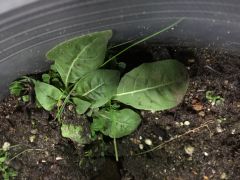
|
Boraginaceae - Borage family Hound's Tongue Cynoglossum officinale Biennial |
|
|
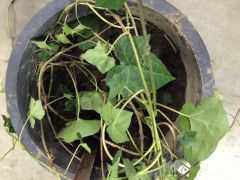
|
Araliaceae - Ginseng or Ivy family English Ivy Hedera helix Evergreen, perennial |
* Long vines can topple trees |
|
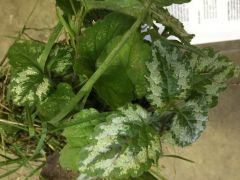
|
Lamiaceae - Mint family Yellow archangel Lamiumgalebdolon Perennial |
|
|

|
Lamiaceae - Mint family Heal-all Prunella vulgaris Perennial |
|
|
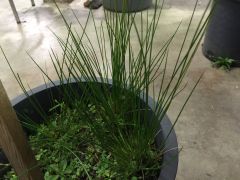
|
Juncaceae - Rush family Rush Juncus spp. Perennial |
* Wherever found, indicate poor drainage and/or acid soils. |
|
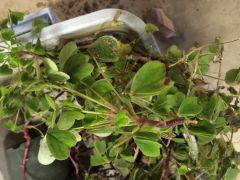
|
Oxalidaceae - Wood-sorrel family Wood sorrel Oxalis spp. Annual / Perennial |
* Leaves contain oxalicacid and if consumed in very large amount it can be harmful. |

